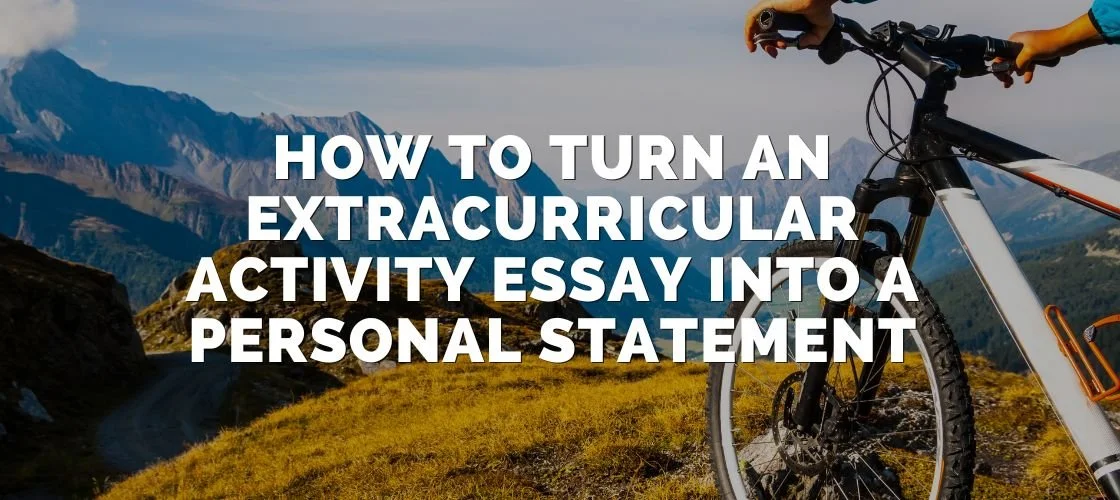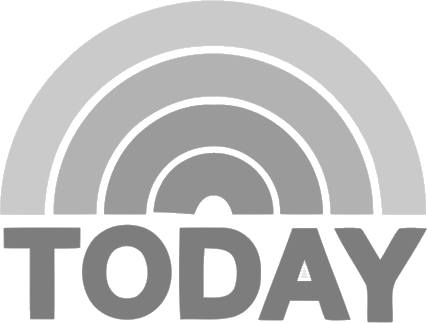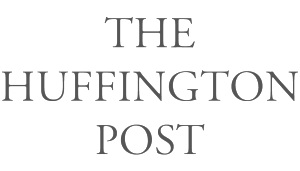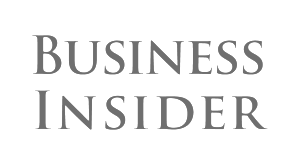Sometimes students want to write about extracurricular activities in a personal statement.
But it can be easy to end up writing an essay that’s more like an activities list or resume, rather than something that shows their core values, insights, skills, qualities, experiences, maybe even some world view.
So how can they write about extracurricular activities in a personal statement in a way that
a) stands out, and
b) helps an admissions officer learn a lot about them?
That’s what this post is about.
TABLE OF CONTENTS
(click to skip ahead)Important Context (Don’t skip this):
At CEG, we believe a personal statement should showcase the values, skills, qualities, skills, and interests a student will bring to campus (and ideally demonstrate insight, and maybe help a reader see some of the student’s world view).
To do this, we help students identify a single “topic”—often using montage structure (for example, rock climbing as a theme/thread that connects different sides of who they are)—and then use that topic to:
Offer details about the topic (e.g., with rock climbing, the grips, routes, and challenges of rock climbing).
Highlight the values they’ve developed (e.g., teamwork, analytical thinking, or a commitment to self-care) and show concrete examples of how those values play out elsewhere in their lives.
Reveal insights—the “so what” moments that tie their experiences back to who they are and what they’ve learned.
(Important note: “Topic” is in quotes above because the topic of a personal statement is actually always the student. The theme or thread is just an excuse to share about themselves. It isn’t the topic itself. For more on that, check out this guide to college application essay topics.)
When balanced well, these three elements work together to paint a fuller picture of a student.
But it’s easy to tip the scales too far toward “what happened” (all action, little reflection). To see this balance in action, compare the two example essays below:
Underline highlights where the writer discusses the “topic” (e.g. “Rock climbing”) itself.
Italics shows where they connect that topic to broader values and experiences.
Bold marks the insights that answer “so what?” and reveal their deeper growth.
A subtle shift in word budget can transform an extracurricular activity report into a compelling lens into a student’s world (read: their skills, qualities, values, and interests).
In the first essay below, the focus is a bit more on the activity itself—too much action, not enough reflection. In the second essay, the balance shifts: we spend less time on the “what happened” and more time on “which of my values this relates” and “why this matters.” This latter approach is more likely to give the college admission reader information that will help them make a more informed decision.
Take a look:
Essay 1: Climbing
The world behind me falls into darkness as I lunge for the top hold. One, two, three—adrenaline gushes as I complete a challenging bouldering route I had been working on for the past three hours. Landing on the cushion below, I turn to face the crowd of cheering climbers. This is when I hear the whispers from some onlookers. A mix of satisfaction and frustration churns as again men underestimate my ability to climb because I am a girl.
So I train harder—chalking up my hands to complete 50 sets of pull-ups and shaking off the burning sensation in my chafed fingers—to prove to myself and the doubters that women can also be strong. To prevent such expectations from rooting themselves in the climbing gym, I invite other women to my training sessions.
Three years later, as the painful training numbs into a rote routine, I start to see a change in the climbing gym. Men are rarely “surprised” when they see a woman completing a challenging route; members encourage one another to reach beyond their limits. Proud that I played a small role in bringing forth such equality to climbing, I was inspired to take more action. This spark of inspiration brought me to Washington, D.C., for the National History Day Contest. There, I was on stage, representing the hidden historical role of Korean women. Climbing has inspired me to move onward and see what’s next for me as a feminist.
To the uninitiated, rock climbing may seem simple: climbing to the top. However, solving a bouldering problem is actually complex. There are countless ways to reach the top, to grip each hold, to move. I subconsciously calculate the risks. Will using the pinch hold give me better leverage? Will doing a dyno jump waste too much energy? Rock climbing has given me the ability to make these decisions in a matter of milliseconds. Analyzing my route made me a better critical thinker, one who remains decisive under pressure. When the schoolwide s’more cooking event lost its venue 20 minutes before the event, the student council members were stunned. Quickly searching for the next best “move,” I suggested that we use microwaves instead of a campfire, the cafeteria instead of the original venue, napkins instead of plates. Thinking like a climber, I was able to improvise.
The creative synergy that comes from discussing a problem as a group has played a key role in my climbing experience. When it is difficult to solve a bouldering route on my own, I seek advice from my fellow climbers. In doing so, I get to interact with a diverse set of individuals, from the 10-year-old school boy to the 60-year-old entrepreneur. Such differences are not hurdles, but rather assets to the community. When I am climbing, I am not the only one on the wall—I’m pushed upward by the chorus of encouraging voices. At school, I am one of the voices supporting others as the president of the Press Club. Through workshops and a mentorship program, my primary goal is to nurture writers, not select the best ones. In doing so, I hope the aspiring writers of the school feel the support from their community as I did at the climbing gym.
I am an avid climber; I am so much more. I am a fearless feminist, a piercing analyst, a decision maker, and a creative, inclusive member of a diverse community. I had once thought of climbing as solely goal-oriented, and that is why I was drawn to it. However, striving to reach the “top” gifted me with unexpected insights and identities that I cherish. I am confident that my climb of life’s mountain has more in store for me, and I have begun my ascent.
Brief Analysis from Ethan + Potential Guidance to the Student:
First, I quite like the naming of the different roles (“I am a fearless feminist, a piercing analyst, a decision maker, and a creative, inclusive member of a diverse community.”) in the final paragraph, which helps let the reader know the kind of person the author believes herself to be.
Having said that, I notice quite a bit of underlined content in this essay (details related to rock climbing itself).
I’d recommend trimming some of those details and expanding on the italics (i.e., values gained and how they have manifested elsewhere in lift), and bold (i.e., insights or “so what” moments).
Why this might be helpful: The reader is less interested in rock climbing (in fact, they’re likely not super interested in rock climbing itself at all), and more interested in the author and her skills/qualities/values/interests…
Plus, focusing on italics content (values + experiences) and bold (insights) might open up opportunities for the student to weave in some of the college admission nutrients (aka qualities that colleges like to see).
And get this: Pretty much any student can do this, with a bit of guidance.
Potential Qs for the student (from a coach):
If you’re a coach/counselor reading this guide, here are some things that come to mind that would be valuable to offer questions on to the student:
If you trimmed 25–50% of the underlined content (action description), might that space allow more italics (values and experiences) or bold (insights) to shine through? How can we ground the reader with just enough context—and then quickly pivot back to you, the student?
We see “equality” in the gym and “analytical thinking” in s’more kitchens—where else in her life does she live these values?
Which of the College Admission Nutrients (e.g., intellectual curiosity, leadership/impact, service to community, collaboration, consistent engagement) are already emerging? How might you lean into it/them more explicitly?
Does the transition to National History Day feel seamless? What linking phrase or sentence could smooth that leap?
Note to coach/counselor: The quality of the question matters. For instance, instead of “Tell me more about rock climbing,” try “What did that moment on the wall teach you about how you handle disappointment elsewhere?”
In the example that follows on escape rooms, notice how the author includes fewer underlined (details about her topic—in this case, escape rooms), and a bit more italics (values + other examples in life) and bold (insights / so what moments).
Essay 2: Escape Rooms
“The United States is under attack!” My eyes widen listening to the words coming from the speaker. “The nuclear missile program has been compromised and you’re now locked in the presidential bunker, moments away from war.” That doesn’t sound good. “You have sixty minutes to disarm the missiles, good luck.” The fate of the world is in my hands…
The fate of the world isn’t actually in the hands of a 17-year-old girl (I hope). This is just the name of the game when it comes to escape rooms. I first suggested that my family attempt one when we started encountering communication issues; now they're the tradition that brings us closer, allowing us to learn more about each other in a mind-bending way. However, the lessons I’ve taken away from escape rooms extend much further than this.
The instant the timer starts ticking downwards, my eyes dart left and right. 60… 59:59… Any of the various items meticulously placed around The Treehouse’s setting could serve as a vital puzzle piece. My analytical mind not only helps plan my getaway in an escape room, but also enables me to look after my community. Living in Chicago’s southside but attending a school near downtown let me witness first-hand the disparities regarding funding and profitability between start-ups created by minorities in my predominantly African American community and nonminorities in the financial district. This observation prompted me to develop an entrepreneurship program that introduces Black girls to resources needed to create their own businesses. Being Black is a substantial part of my identity, so it’s important for me to see others of a similar complexion in a position to make a difference. I strive to make others feel represented, and my ability to analyze situations to create opportunities allows me to do this.
The door to a second room pops open. 36:28… 36:27… Escape rooms spark a sense of curiosity that I couldn’t imagine gaining elsewhere. Upon entering The Wizard of Oz, I’m left wondering how the trees placed before me are programmed to blink in Morse code. This curiosity extends into other aspects of my life, leading me to question, for example, how Bernoulli's principle permits objects to levitate through air currents despite seemingly unbalanced forces. Or what the greatest possible length for a straw is (after dragging a tube-like model up three flights of stairs, I can confidently say 32-feet). The creative facet of escape rooms also triggers my innovative spirit. Though time-consuming, I enjoy scouring through leftover craft supplies to find popsicle sticks for my latest Rube Goldberg machine because it allows me to experiment with creating systems to solve everyday tasks. By letting my thoughts run wild and engaging in clever endeavors, I gain a feeling of satisfaction knowing that some day the product of my doing will impact a project expanding beyond myself.
The last room looms. 2:01… 2…
Okay, to be honest I don’t always escape the rooms in time. The Museum Heist is an example– ultimately, the challenge of squirming through vents and deactivating lasers triumphed over me. Yet, I left grateful knowing I’d be better prepared for our next puzzle. And I’ve worked hard to not let other setbacks deter me. I was crushed after finding out I didn’t advance to nationals in my freshman year of Business Professionals of America, but after tweaking my presentation with the feedback provided, I emerged stronger the following year, earning second place. I approach every situation eager to participate, willing to fail, and determined to grow because each experience enables me to seek improved solutions moving forward. I’ve learned that success comes with roadblocks, but outcomes are even more satisfying with a story to tell.
I’m ready to enter the next stage of my life as an engineer with the insights that escape rooms have given me. Maybe I’m prepared to have the fate of the world in my hands after all.
Brief Analysis:
Notice how the slightly longer, more developed “italics” and “bold” sections allow us to get to know the student a bit better, beyond her interest in escape rooms.
Note too how she’s also able to weave in connection to the admission nutrients—though it might have been nice to weave in “collaboration” a bit more clearly.
Essay marked for annotations (see grid below):
[Note: Below, we’ve bolded where the student uses escape rooms to directly link to some of her core values; in the grid beneath, we lay out how she illustrates those values via specific life experiences, and then reflects on why these experiences are meaningful.]
“The United States is under attack!” My eyes widen listening to the words coming from the speaker. “The nuclear missile program has been compromised and you’re now locked in the presidential bunker, moments away from war.” That doesn’t sound good. “You have sixty minutes to disarm the missiles, good luck.” The fate of the world is in my hands…
The fate of the world isn’t actually in the hands of a 17-year-old girl (I hope). This is just the name of the game when it comes to escape rooms. I first suggested that my family attempt one when we started encountering communication issues; now they're the tradition that brings us closer, allowing us to learn more about each other in a mind-bending way. However, the lessons I’ve taken away from escape rooms extend much further than this.
The instant the timer starts ticking downwards, my eyes dart left and right. 60… 59:59… Any of the various items meticulously placed around The Treehouse’s setting could serve as a vital puzzle piece. My analytical mind not only helps plan my getaway in an escape room, but also enables me to look after my community. Living in Chicago’s southside but attending a school near downtown let me witness first-hand the disparities regarding funding and profitability between start-ups created by minorities in my predominantly African American community and nonminorities in the financial district. This observation prompted me to develop an entrepreneurship program that introduces Black girls to resources needed to create their own businesses. Being Black is a substantial part of my identity, so it’s important for me to see others of a similar complexion in a position to make a difference. I strive to make others feel represented, and my ability to analyze situations to create opportunities allows me to do this.
The door to a second room pops open. 36:28… 36:27… Escape rooms spark a sense of curiosity that I couldn’t imagine gaining elsewhere. Upon entering The Wizard of Oz, I’m left wondering how the trees placed before me are programmed to blink in Morse code. This curiosity extends into other aspects of my life, leading me to question, for example, how Bernoulli's principle permits objects to levitate through air currents despite seemingly unbalanced forces. Or what the greatest possible length for a straw is (after dragging a tube-like model up three flights of stairs, I can confidently say 32-feet). The creative facet of escape rooms also triggers my innovative spirit. Though time-consuming, I enjoy scouring through leftover craft supplies to find popsicle sticks for my latest Rube Goldberg machine because it allows me to experiment with creating systems to solve everyday tasks. By letting my thoughts run wild and engaging in clever endeavors, I gain a feeling of satisfaction knowing that some day the product of my doing will impact a project expanding beyond myself.
Ethan Sawyer (he/him) has been eating/sleeping/breathing college essays for most of his waking hours since 2003. He is an internationally recognized college essay and admissions expert and the author of the Amazon bestsellers College Essay Essentials and College Admission Essentials. Ethan’s educational experiences, reading, and training have informed his deep interest in storytelling as a vehicle for personal development and growth. With a passion for access and equity, Ethan has provided quality resources for students, families, and professional communities alike. He has supported thousands of students through the complicated college search and application process, all while staying true to his core values of providing ease, purpose, and joy in the process.










